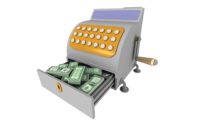Five keys to unlocking profitable growth
Here are the five keys to ensuring your distribution business doesn’t miss out on growth.

Steve Deist is with the Indian River Consulting Group, a management consulting firm for senior distribution and manufacturing executives. Learn more at ircg.com.

Mike Marks is with the Indian River Consulting Group, a management consulting firm for senior distribution and manufacturing executives. Learn more at ircg.com.

The wholesale distribution industry continues to grow at a faster rate than the overall economy.



Too often, distributors’ salesandmarketingresources are tied down doing the same old things when they could be working in much more powerful ways.
How does this happen? It is partly because of a sales-oriented mentality that if the numbers are bad, it is the economy’s fault; if they are good, the discussion is unnecessary. When a senior executive starts asking questions about the return on sales and marketing investments, he or she may hear:
· “We are not price competitive.”
· “This is the best we could do with limited funds.”
· “We need to hire more reps. I have to call on every customer or our competitors will take the business.”
These answers are drawn from anecdotes and emotional conviction. But, the key to gaining true market alignment is to rely more on data than on assumptions and to challenge yourself to reconsider your role in the supply chain.
A market access strategy provides a framework for distributors to align a company’s investments with real opportunities for growth. Market access is about understanding what’s really happening in your markets and responding accordingly. And it’s ongoing with stops along the way. It’s not about pinning success on one tool or a one-size-fits-all approach.
Here are the five keys to ensuring your distribution business doesn’t miss out on growth.
1. Understand how demand is created
Our firm’s research shows a high percentage of most distributors’ business is fundamentally bought, not sold. In one industry we found over a two-year period customers did not deliberately switch suppliers or products about 90% of the time. In other words, the decision to buy was made entirely by the customer without any direct influence by the salesforce or marketing department.
How much does a customer rely on you to select products? What is its ratio of purchases to quotes? How have the purchased products evolved over the past few years and do you expect the mix to change in the near future? Answering these questions can help determine when and whether your product is bought rather than sold.
When your product is being bought you should invest in protecting the business, not in demand creation. This means ensuring customers never experience a reason to look elsewhere. Distributors often consider customer service to be humdrum, somehow less strategic than offensive selling. In fact, many distributors would benefit from investing more to ensure they are boringly reliable.
In the study cited previously, we found about 8% of distributors’ customers switched suppliers or products because of a problem or change within their own organizations. They were not swayed by a persuasive sales rep. Rather the change was induced by something outside your rep’s control, such as a new design requirement, a performance failure by the incumbent supplier or a buyer retiring. Although your sales rep will certainly take credit for the new business, the reality likely is he simply was at the right place at the right time backed by your company’s well-earned reputation.
In these scenarios, the key is to successfully intercept these opportunities, which we call critical selling events. It’s more important to have good coverage of your customers so you have visibility of these events than to have the absolute best sales rep making constant sales calls.
Take this extreme example: Assume you sell coffins. You can double your selling costs by doubling the amount of sales calls, but that won’t have any impact on revenue until someone actually dies. The key driver of coffin purchases will be the number of customers your reps regularly see.
If you are reasonably good at math you will recognize that based on these numbers only about 2% of the business remains to be proactively sold by your sales rep. We refer to this as disruption selling. This is the classic “let me show you what you’ve been missing” sales role that most of us envision when we think of a great salesperson.
These numbers may not be accurate for your business, but they should give you pause. Do you really know how much of your revenue growth comes from protection, interception and disruption? Do your sales and marketing resources reflect this mix or are they based on long-held but flawed assumptions about sales?
2. Provide different levels of service to different customer segments
Step back and think not about what you’re selling, but what your customer is buying. The customer wants to look good to his boss. He wants to increase profitability and reduce hassles. And there is no company today where time is not a critical constraint; everyone is doing more with less.
Despite the differing level of value customers ascribe to the services provided by wholesaler-distributors, distributors often offer the same level of service to everyone.
Some customers are price-conscious and whichever source offers the lowest price gets their business. Other customers value product availability, extended credit terms or the ability to procure most of their needs from a single source. Does your sales support change based on what the customer needs? If it doesn’t, the sales team may have an impact on some customers but very little, if any, impact on others.
Segmenting your customers based on what drives them helps you identify how you can align selling resources so that their needs are met at the lowest cost to you. Do sales reps primarily fill demand that already exists or do they create demand by, for example, showing customers how a product or service can improve productivity?
Most companies that complete an analysis of their customers’ buying preferences will find that some of the accounts assigned to an outside sales rep can have their needs met by a lower cost function such as the Internet or inside sales. In most cases, this actually results in better customer service and improved sales coverage in the eyes of your customers.
A market-based sales model that incorporates specialized roles is more efficient and effective, especially when backed up by real strategy, effective sales management and solid analytics.
3. Measure the right things
How well are you accessing the market with your sales investments? If you’re like most distributors, you’re probably measuring sales productivity based on sales or gross profit per person. Sure, it’s easy to measure, but it provides no insight whatsoever into the activities that generate the results. It’s like measuring how hard an engine is working by looking at the speedometer instead of the tachometer.
A key component of improving your access to growth is analyzing activities in addition to results. A lot of companies put too much field sales resource into customers that don’t value it; they call on customers far more frequently than they need to; or they provide them with technical sales that they don’t really value.
Remember the demand creation categories described above: protection, interception and disruption. If you are focused on protection, then measuring service levels may be more important than tracking monthly sales variances. Interception can be gauged by capturing the number of critical sales events seen, intercepted and won. Because disruption is by definition proactive, it can be measured by comparing target account growth with the overall average for your company.
Strong sales managers will take this data and make it actionable. A strategically designed sales incentive plan will serve as reinforcement. It’s critical to eliminate low-value activities by sales reps and direct them to high-potential opportunities. Targeting the right opportunities is one of the best ways to maintain or grow overall revenues.
4. Understand true market potential
Distributors tend to hold certain beliefs about their markets — but those often are based on gut feel rather than facts. Companies need to use a combination of external market data and customer insight to truly understand the dynamics of the markets they serve. We usually find that distributors significantly overestimate their current share of their customers’ total spend and underestimate the available potential in their markets.
It’s critical to understand the value is not only in the data itself; it’s also in the conversations it provokes. Think of market data as the sand in the oyster that creates the pearl. Data is most powerful when it conflicts with existing assumptions.
Services such as Industrial Market Information can provide data on growth potential by market or customer type, a benchmark from which to start a conversation. Are you reaching all the customers in your markets? What’s your share of wallet with existing customers? What’s your market share? Are there customer segments you aren’t reaching but should be targeting?
But don’t just look at where the money is spent and what it’s spent on. Use external data to prime the pump for discussion and the gathering of more qualitative information.
Combine the data with customer insight, which can help you understand why your markets look the way they do. Customer insight also can provide a window into which customers are candidates for lower-cost sales channels, which are OK in the current channel but may need some changes, and which are candidates for more intensive, strategically driven sales and marketing initiatives. It also will help you understand the cost to grow those customers.
5. Invest in new capabilities
If you are investing to reach aggressive sales goals, think twice before deciding to add more sales reps. These days high-performing distributors are putting their money into developing new sales and marketing competencies. They are tailoring their capabilities to fit the needs of their customer segments as closely as possible.
If you worry about competing with Amazon you may want to invest more into technology and clean product data. If you aren’t getting sufficient market coverage consider more hybrid or
tele-sales reps, possibly supported by technical specialists. If you are struggling to get good market data or customer insight it may make sense to spend on market research or data analysts rather than another field sales rep.
If you have 100 sales reps, arming them with better data and tools could easily make them 10% more effective – the same as hiring 10 more reps.
Evolving to more specialized sales roles can pay enormous dividends. For example, using a hybrid inside/outside sales rep can result in lower cost-to-serve because the same rep can cover more accounts. It also provides better market coverage because the rep is typically in contact with customers much more frequently. We’ve often seen such programs generate higher revenue per account while also reducing selling expense — radically improving sales productivity.
The move to more specialized sales roles has another important benefit. One of distributors’ top concerns these days is the loss of decades of knowledge as veteran salespeople retire. And the truth is you won’t be able to replace that knowledge. But, if you go to a more specialized sales structure you don’t need to. It is much easier to hire an engineer as a technical specialist, a computer jock as a marketing analyst and a personable extrovert as an inside sales rep than to find three people who can do all these things.
A decade or more ago, everyone was predicting the death of wholesaler-distributors by the hands of the Internet. Distribution as we knew it would go away. These days, the fear is the impact of Amazon and other nontraditional competitors on the industry.
There will always be something.
But the wholesale distribution industry continues to grow at a faster rate than the overall economy. The industry is healthy and the future is bright. The world is headed away from mass production toward an age of mass customization. Distributors that embrace data, think strategically and move beyond the “one-size-fits-all” model will thrive.
Looking for a reprint of this article?
From high-res PDFs to custom plaques, order your copy today!












